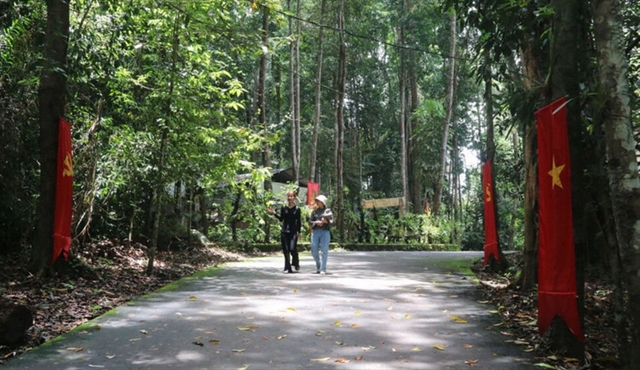 Environment
Environment
.jpg)
 |
| Director of the Institute of Geosciences and Mineral Resources Trịnh Hải Sơn delivers a speech at the seminar on the potential and direction of developing non-traditional energy in Việt Nam on Friday. VNA/VNS Photo |
HÀ NỘI – Việt Nam must prioritise the research and development of non-traditional energy sources as this strategic move is crucial for the nation to attain its target of net-zero emissions by 2050, Director of the Institute of Geosciences and Mineral Resources Trịnh Hải Sơn said.
He spoke at a seminar on the potential and direction of developing non-traditional energy in Việt Nam, organised by the Institute of Geosciences and Mineral Resources in collaboration with SES Vietnam Exhibition Services Co, Ltd in Hà Nội on Friday.
The event is part of the 6th International Mining and Minerals Recovery Exhibition for Việt Nam (Mining Vietnam 2024).
In his opening speech at the seminar, Sơn emphasised that environmental protection and reducing greenhouse gas emissions are urgent and important issues for human development. One of the causes of environmental pollution and climate change is the excessive use of fossil energy sources such as coal, oil and gas.
In Việt Nam, the energy sector accounts for over 80 per cent of total greenhouse gas emissions. As of the end of 2023, new renewable energy sources only accounted for nearly 27 per cent of the total electricity capacity in the entire system.
Achieving the goal of net-zero emissions by 2050, which the Government has committed to the international community, is certainly a significant challenge, he said.
"Therefore, developing non-traditional energy sources will be a good solution, contributing to environmental protection and ensuring national energy security," he said.
The seminar focused on two main types of energy: underground coal gasification and geothermal energy, including both traditional and non-traditional energy, to introduce the potential and outline the appropriate roadmap for non-traditional energy exploitation in the context of the emerging trend of sustainable development.
Sharing insights on the potential of brown coal and the underground coal gasification capability in the Red River Delta, Phan Đức Lễ, a specialist from the institute’s Journal of Geology and Minerals, noted that the coal basin in the Red River Delta possesses geological conditions, engineering geology, hydrogeology and physical-chemical properties suitable for underground coal gasification at deep levels.
Preliminary calculations indicated that the gas yield could be equivalent to that of a large gas field, with economic and technical feasibility.
"This is a new research direction of high practical significance, contributing to ensuring energy security for Việt Nam in the future as production from conventional oil and coal is declining. If successful, it will enhance the efficiency of energy resource utilisation, especially for deep coal basins located in economically strategic areas that cannot be exploited using traditional methods," he said.
He recommended conducting trial mining to gather additional technical data before proceeding to industrial mining.
The trial mining site should be located outside the sea embankment to ensure environmental safety and evaluate the resource prospects of coal seams from 1,000 to 1,500 metres depth. Additionally, both the trial and industrial mining phases should involve the participation of various organisations and individuals to diversify investment sources.
Discussing the geothermal resources of Hưng Hà – Quỳnh Phụ in Thái Bình Province, Trần Trọng Thắng from the institute suggested further research on geothermal energy development in the Red River Delta region.
Furthermore, the Pleistocene aquifer in the Hưng Hà – Quỳnh Phụ geothermal basin holds great potential for supplying hot water for both direct applications and current needs of the local population, necessitating larger-scale development.
Assessing the potential of installing shallow geothermal heat pump systems in the Red River Delta, Thắng noted that the groundwater temperature in shallow aquifers is widely distributed in the research area at depths of 10-15 metres or 60-80 metres, indicating feasible potential for installing shallow geothermal heat pump systems.
According to Thắng, initial research results indicate energy savings efficiency of up to 45 per cent, and the application of geothermal heat pump technology can be widely deployed in the Red River Delta region. VNS
.jpg)



